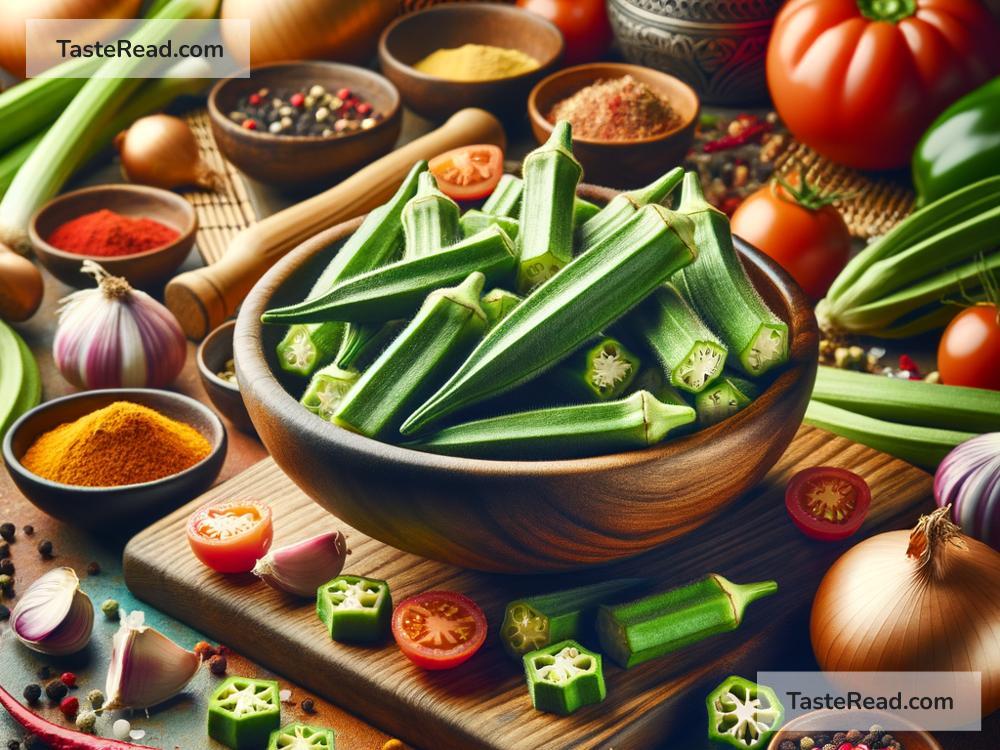The Fascinating History of Okra in African and Asian Cuisines
Okra, a green vegetable with long pods, might not seem like much at first glance, but it has an incredible history that spans continents, cultures, and centuries. This humble vegetable has been a staple in African and Asian cooking for countless generations. Let’s explore its journey, how it became essential to these cuisines, and why people love its unique taste and texture.
What is Okra?
Okra, also known as “lady’s finger” in some parts of the world, is a flowering plant that produces edible green seed pods. It can be eaten in many ways – boiled, steamed, fried, roasted, or cooked in stews and soups. One of its most unique features is its mucilaginous (slimy) texture when cooked. Though some people shy away from the sliminess, others celebrate it as part of its charm and use it to thicken dishes like soups and curries.
Okra is thought to have originated in Africa, though it has made its mark in many parts of the world, especially Asia. Over time, it has become a bridge that connects different culinary traditions.
Okra in African Cooking: Rooted in Tradition
Okra has deep roots in African cooking and culture. Historians believe that okra originated in Ethiopia, Sudan, or West Africa thousands of years ago. It was cultivated and prized for its nutritional value and versatility. The vegetable spread across different regions of Africa, where it was incorporated into a variety of dishes.
In West Africa, okra is particularly popular in stews. “Okra soup,” for example, is a staple dish often served with fufu (a starchy dough-like food made from cassava, plantains, or yams). These stews have a thick, hearty texture, thanks to the natural sliminess of okra. The vegetable also pairs beautifully with spices, dried fish, and meats, creating bold and satisfying flavors.
Okra was also an essential food during the transatlantic slave trade, when enslaved Africans brought their food traditions and seeds, including okra, to the Americas. In many ways, okra brought comfort and connection to African people far from their homeland. It became a vital ingredient in dishes like gumbo in Southern United States cooking, which draws heavily on African culinary influences.
Okra in Asian Cooking: From Ancient Times to Modern Kitchens
Okra’s journey from Africa to Asia is equally fascinating. It is believed that Arab traders carried okra seeds from Africa to South Asia and the Middle East more than a thousand years ago. The plant thrived in warm climates, and its pods became a key ingredient in regional cuisines.
In India, okra is called “bhindi” and is deeply loved in everyday cooking. Indian dishes featuring okra range from spicy dry stir-fries to rich curries. One popular dish is “bhindi masala,” where okra is cooked with onions, tomatoes, and a mix of fragrant spices like cumin, turmeric, and coriander. Indians appreciate the vegetable’s tender texture and ability to soak up flavors from spices.
In Southeast Asia, okra is also widely used in local cuisine. In Malaysia and Indonesia, for instance, okra is added to dishes like “asam pedas,” a tangy and spicy tamarind-based fish stew. Similarly, in Filipino cooking, okra can be found in “pinakbet,” a vegetable stew flavored with shrimp paste.
Elsewhere in Asia, such as Japan and Korea, okra is enjoyed for its health benefits. It is often eaten blanched or boiled, served as a simple side dish with soy sauce or sesame dressing. Its slimy texture is appreciated here as well and paired with flavors that enhance its natural freshness.
Why Do People Love Okra?
Okra is loved not just for its taste, but also for how healthy and versatile it is. It’s rich in fiber, vitamins C and K, and antioxidants. This makes it a nutritious addition to diets, helping people stay strong and healthy.
Its slimy texture, which some people find unusual, has the practical benefit of thickening soups and stews. This makes okra an essential ingredient in dishes where a hearty consistency is desired, like African okra soup or Louisiana gumbo.
Culturally, okra is more than just food – it’s a link to the past. In African and Asian communities around the world, cooking okra dishes evokes memories of family traditions, histories, and celebrations.
Okra Today: A Global Staple
Today, okra is grown and enjoyed in countries worldwide. It has crossed borders and blended into cuisines from the Caribbean to the Mediterranean and beyond. Its global popularity is a testament to its adaptability and how well it complements different ingredients and cooking styles.
Restaurants and cooks are now experimenting with new ways to serve okra, from pickling it to incorporating it in salads. While modern cooking highlights its versatility, traditional recipes still hold a special place in the hearts of those who grew up eating okra.
Conclusion
Okra’s journey from Africa to Asia and beyond is a story of migration, resilience, and cultural exchange. What was once a humble vegetable growing wild in Africa has turned into a culinary treasure loved by millions around the world. Whether you enjoy it stir-fried, stewed, curried, or simply blanched, okra continues to bring people together through shared flavors and traditions. The next time you see okra on your plate, remember its fascinating history and the many people who have cherished it for generations.


